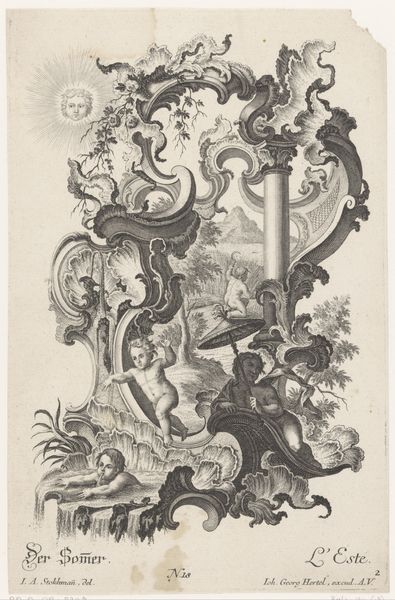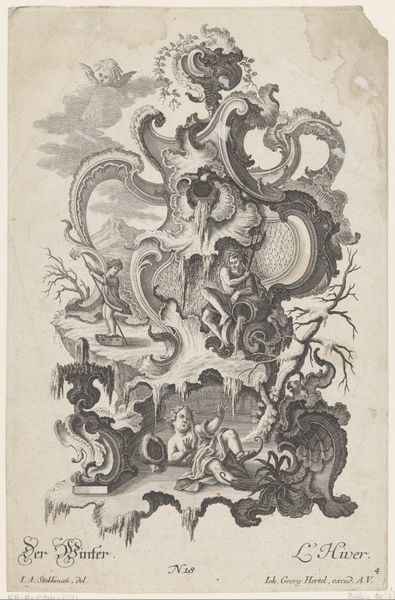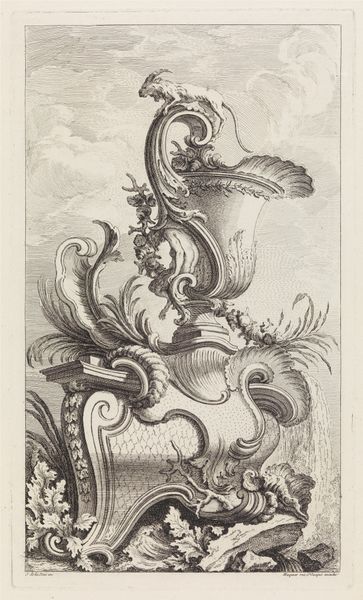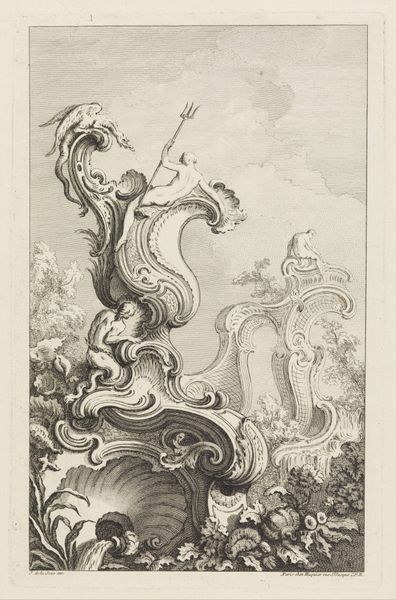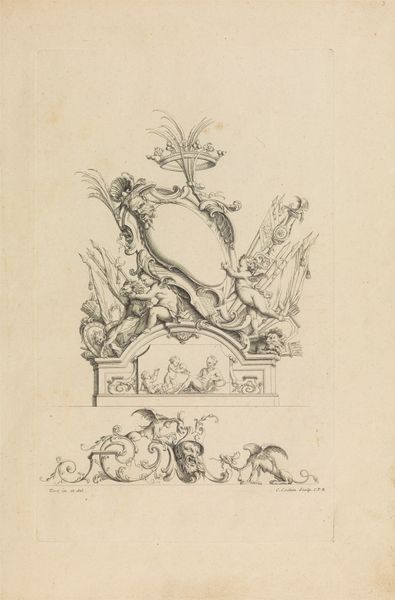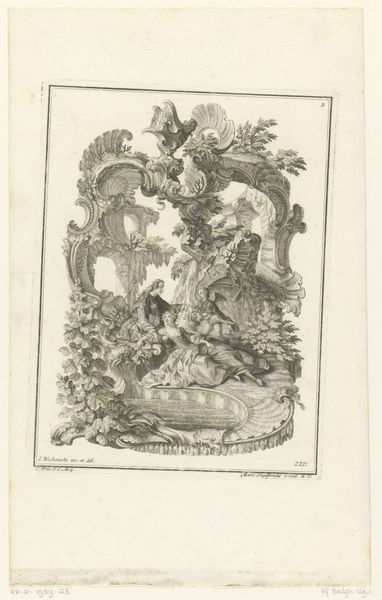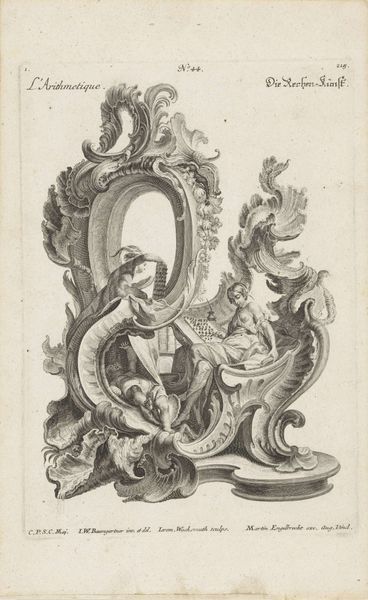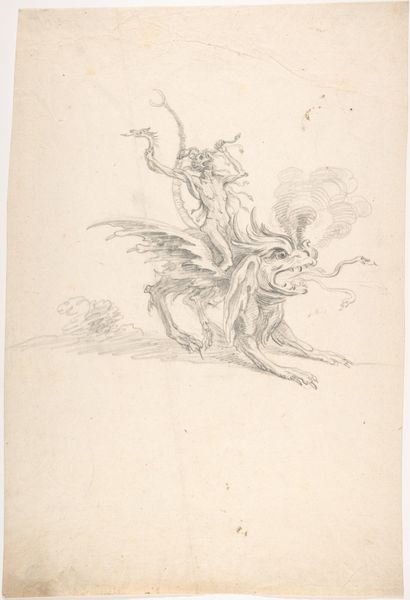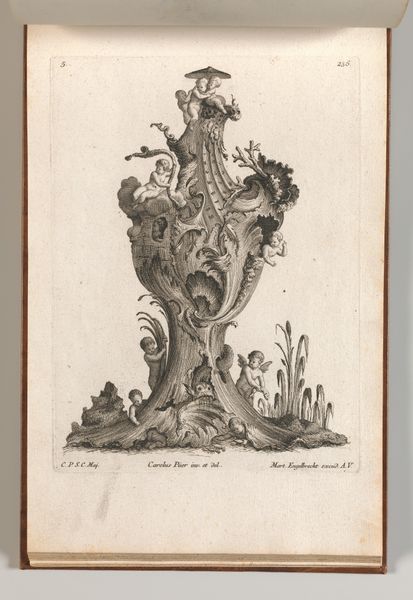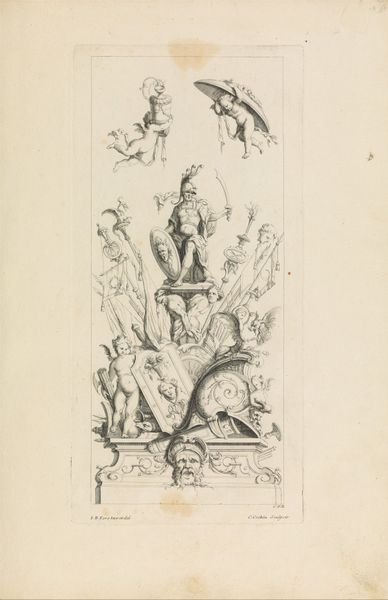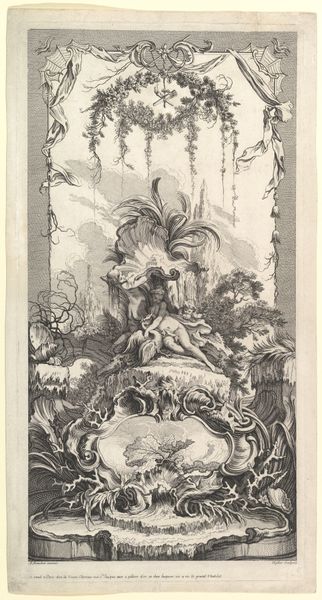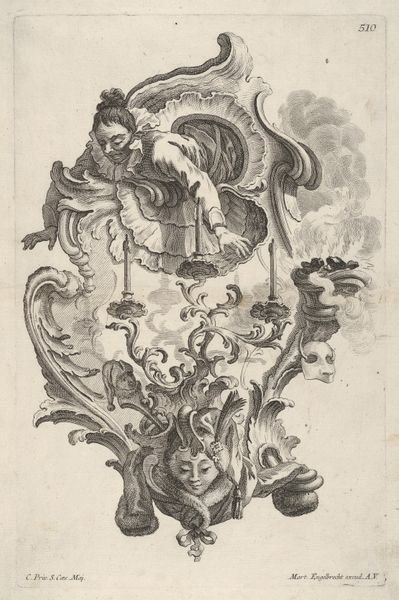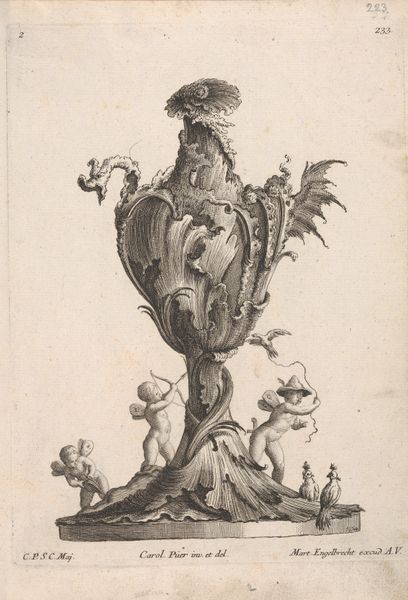
drawing, print
#
drawing
#
toned paper
#
light pencil work
# print
#
pencil sketch
#
old engraving style
#
etching
#
female-nude
#
ink drawing experimentation
#
pen-ink sketch
#
france
#
pen work
#
pencil work
#
pencil art
#
male-nude
Dimensions: Plate: 13 7/8 × 9 1/16 in. (35.3 × 23 cm) Sheet: 16 3/16 × 11 7/8 in. (41.1 × 30.1 cm)
Copyright: Public Domain
Curator: Hello, and welcome. I’m here to tell you about a piece from the Metropolitan Museum of Art, an etching titled "Plate from Book of Vases," dating from sometime in the 1700s. It’s attributed to Jacques de La Joue the Younger, a French artist known for his ornamental designs. Editor: My first thought? Drama! There’s so much theatrical flair packed into this monochrome print, like a miniature stage set. The whole thing seems to surge upwards in a crescendo of curls, shells, and figures, defying gravity. Curator: That’s a perfect observation. These kinds of ornamental prints served as source material, demonstrating design possibilities. The etching could guide the creation of actual objects, architectural features, and interior embellishments, effectively shaping aesthetic trends of the time. Editor: So, this wasn’t necessarily meant to be art for art's sake. It's like an 18th-century mood board! And, you know, seeing this intricate cascade of… stuff… makes me wonder what these vase books tell us about the culture of display back then. It seems people really liked to SHOW OFF. Curator: Precisely. These elaborate designs were emblems of status and refinement, reflecting a society that valued ornamentation. What's interesting, too, is that artists like La Joue circulated their ideas this way. These prints democratized design somewhat, moving ideas from the palace and estate to wider workshops. Editor: Hmm. Democratization by way of ornamentation – that’s a delightful paradox! For me, there’s a real visual energy at play too. My eye dances from the reclining lion at the center to the triumphant figure at the very top, not to mention the cascade of water beneath. Even though it’s a still image, it conveys movement. Curator: The use of line is incredibly skilled; La Joue achieves remarkable depth. And of course, there's the idealised nude figure. These classicizing motifs connect back to ancient Greece and Rome, echoing power and intellect. These images weren’t just decorative; they were imbued with a cultural value system. Editor: Well, after all this context I now find myself daydreaming about the artisans who looked at these plates, figuring out how to transform those lines into something real and touchable. Curator: It's these dialogues, tracing art’s cultural journey from concept to object, that enrich our appreciation. Thank you for considering "Plate from Book of Vases" with me today. Editor: And thank you, let the conversations continue!
Comments
No comments
Be the first to comment and join the conversation on the ultimate creative platform.
